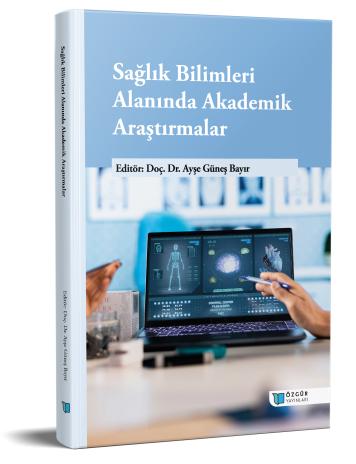
Fatigue, Energy and Disability Levels of Elderly People Living in Nursing Homes and their Relationships with Each Other
Chapter from the book:
Güneş Bayır,
A.
(ed.)
2025.
Academic Research in Health Sciences.
Synopsis
Aim: This research was conducted to determine the fatigue, energy and disability levels of elderly people living in nursing homes and their relationships with each other. Materials and Methods: The universe of this descriptive study consisted of 320 elderly people living in nursing homes in some provinces of Turkey. No sample selection method was used, and 263 (82.1%) volunteer elderly people were reached. A questionnaire form prepared by the researchers according to literature, Visual Similarity Scale for Fatigue and Energy (VAS-F) (VAS-E) and Brief Disability Questionnaire (BDQ) were used as data collection tools. Data were evaluated in a computer environment using number, percentage, mean, standard deviation, cronbach alpha, t-test in independent groups, one way-ANOVA and correlation analyses. Results: It was determined that 43.3% of the elderly were in the 65-69 age group, 54.4% were male, 37.3% were illiterate, 55.5% were widowed or divorced. It was determined that 50.6% of the elderly had been living in a nursing home for 1-5 years, 23.2% did not come to the nursing home voluntarily, 37.3% were satisfied with living in a nursing home, and 55.9% would prefer to live in their own home. The average fatigue of the elderly was 63.2±21.9 (min=7, max=123) and was at a normal level, and the average energy level was 19.9±8.5 (min=1, max=45) and was at a low level. While 59.7% of the elderly have severe, 24.3% moderate, 9.1% mild disability, 6.8% do not have disability. A negative relationship was found between the fatigue and energy levels of the elderly (p<0.001). A positive relationship was found between the fatigue and energy levels of the elderly and their disability (p<0.001). Conclusion: The study results should be reported to the healthcare team members working in nursing homes and they should be made aware of these issues. In this direction, more effective services can be provided to the elderly according to their needs. The same study should be conducted on elderly people who do not live in nursing homes and the results should be compared with those living in nursing homes. As a result of the studies, it can be suggested that effective interventions be made for groups whose fatigue, energy and disability levels are more problematic.

